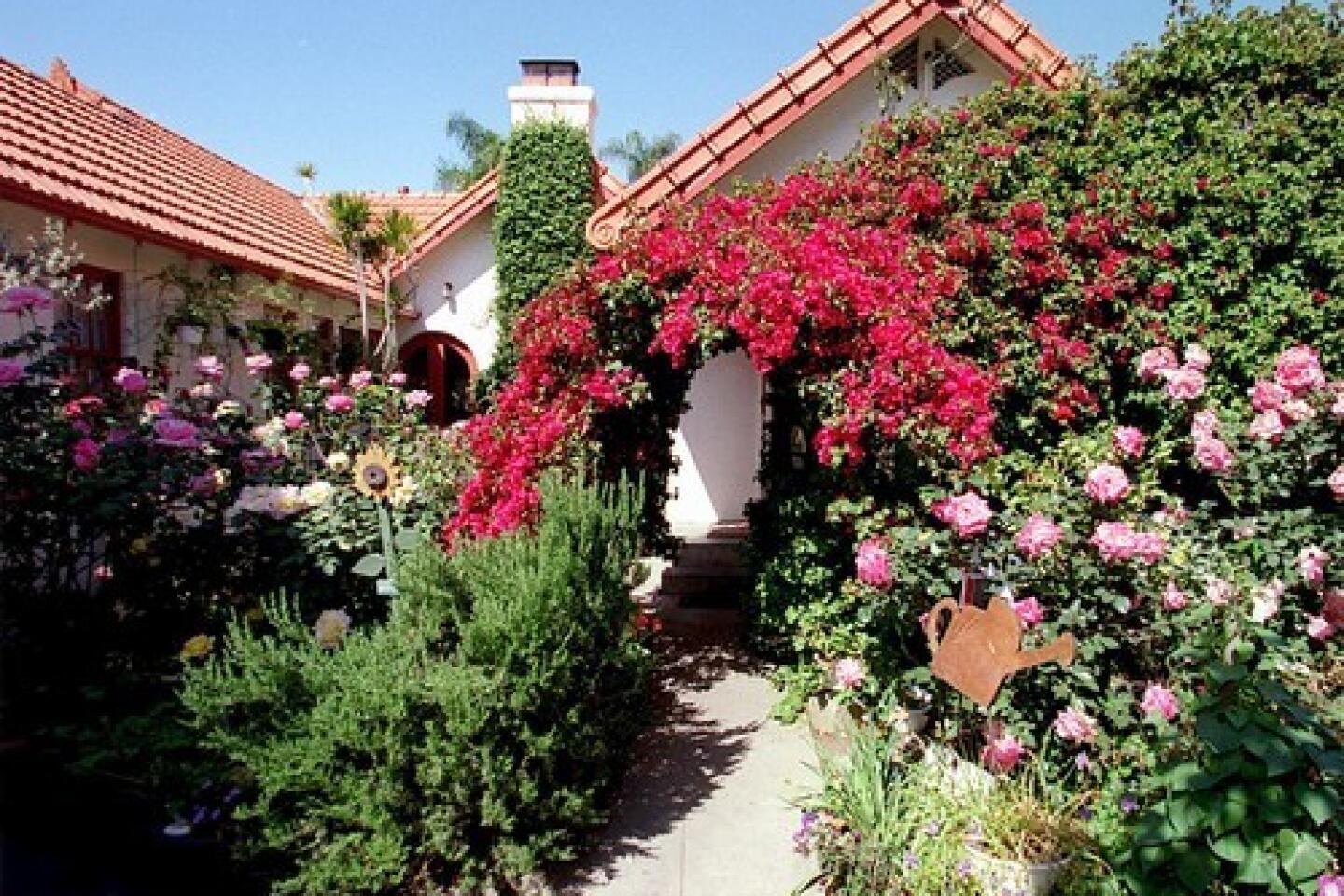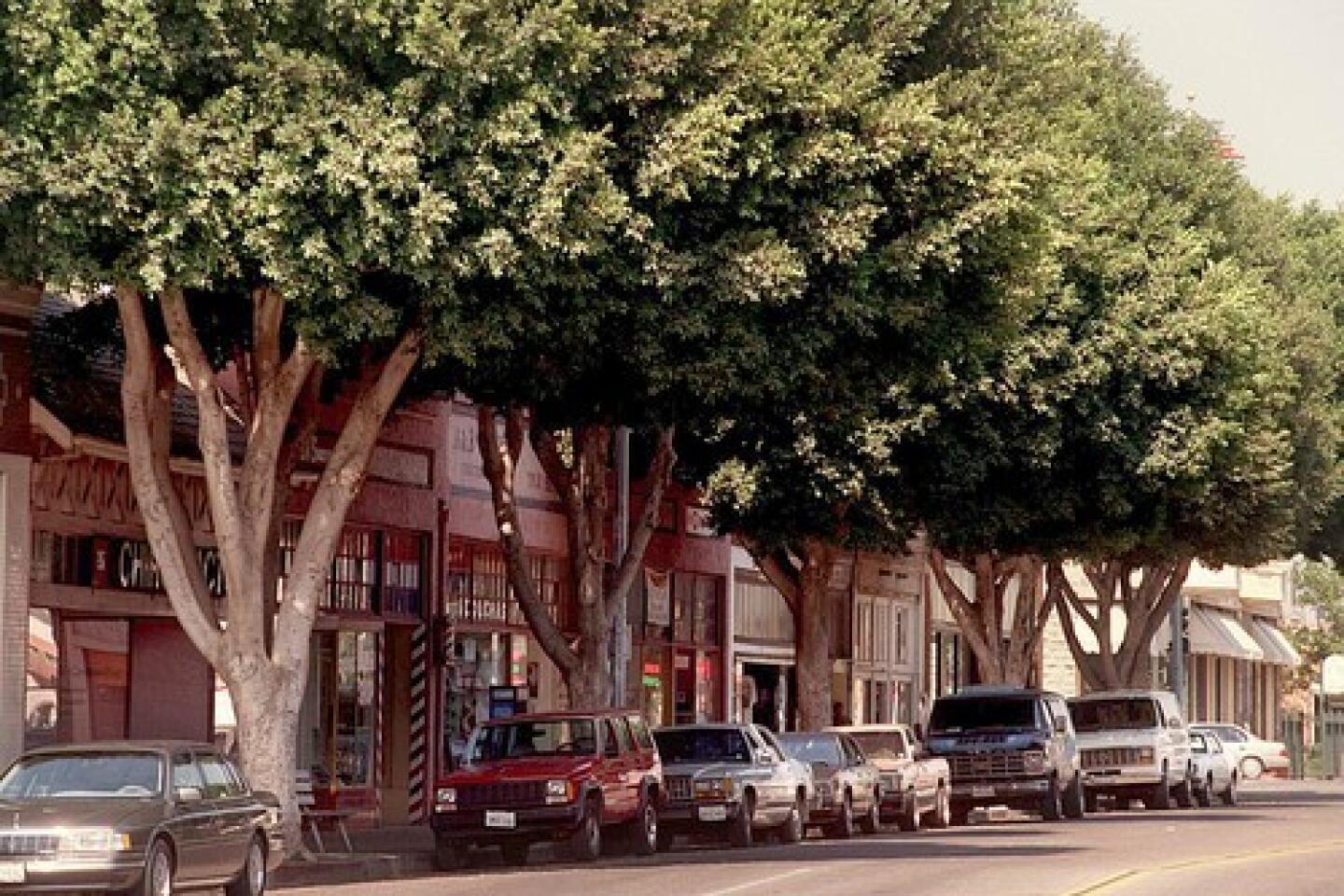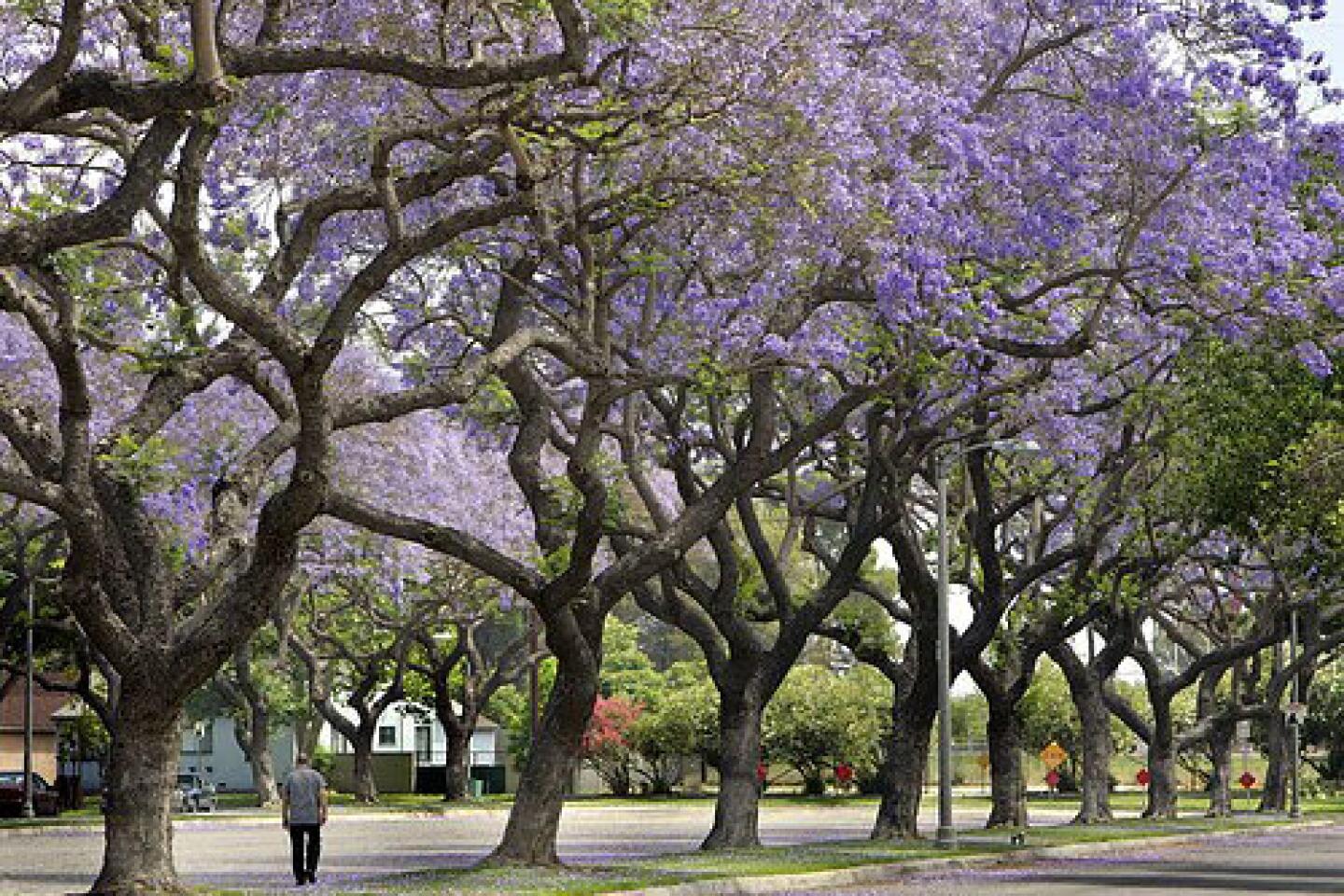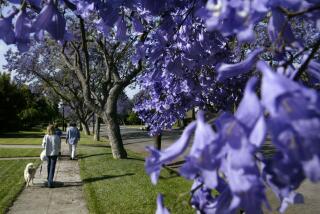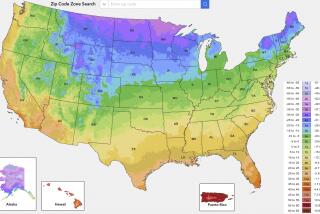After the frost, time for a comeback?
WHEN the record-cold temperatures hit in January, the questions to Barbara Eisenstein, horticulture outreach coordinator for Rancho Santa Ana Botanic Garden in Claremont, started rolling in: My agave ‘Blue Flame’ melted in the freeze. What can I do? My lantana looks ghastly. Should I prune?
“I’m still getting questions,” says Eisenstein, who e-mailed suggestions and fellow gardeners’ reports from the field as a form of electronic triage. She says recent inquiries have been about how to salvage frost-bitten giant bird of paradise and what to plant in the place of burnt ficus.
Early on, the advice from most horticulturists was to be patient.
Don’t rush to rip out plants. Don’t prune. Smart gardeners, experts said, will wait till spring and reassess.
So now what?
How can you tell if those frost-bitten plants can be saved? What’s the best way to nurse them back to health? And with the greater L.A. area facing record low rainfall and the prospect of a drought, which ailing flora should be replaced with low-water substitutes?
We asked experts for answers, focusing specifically on some of the most common plants in the Southern California garden.
*
Bougainvillea
THE woody vine got burnt by the cold in many regions and may still look hopeless, but just remember: Bougainvillea is surprisingly resilient, so keep waiting for signs of new growth. Gardeners may be tempted to grab the clippers and start snipping before then, but the result may be a plant that is too tight and vigorous at the bottom.“I’ve heard from a few people that it’s starting to pop back,” says Dale Uchida, co-owner of Bellefontaine Nursery in Pasadena. He suggests pruning burnt foliage only after new growth appears, which may not be until May in some microclimates. If new growth doesn’t appear on the plant by then, “It’s probably a goner,” he says.New bougainvillea can be put into the ground anytime from spring through fall. “The sooner you can plant it, the better,” Uchida says, though he warns that growers are still coping with damaged or destroyed stock of their own. He expects the plant to be more widely available in stores in late spring.
As frustrating as it may be, replacing dead bougainvillea with new bougainvillea is probably smarter than experimenting with other plants. Why? Bougainvillea is drought tolerant, and dry spells are far more common here than arctic cold snaps. Besides, Uchida says, it grows so fast that you’ll hardly notice the old plant is gone.
*
Bird of paradise
TROPICAL plants withered during the icy nights and mornings three months ago. One of the biggest hit: bird of paradise (Strelitzia reginae) and, to an even larger extent, giant bird of paradise (Strelitzia nicolai).
The bad news: Browned leaves won’t green back up, so you might as well trim them. The good news: Unless the ground froze, the plants should recover and develop new foliage and flowers.
Some gardeners respond to severe plant damage with severe watering. Both types of Strelitzia, however, will appreciate less irrigation than usual because over-watering can lead to rot. (This is even more true with another popular tropical, the banana plant.) Experts’ other advice: Don’t fertilize until new growth appears.
Looking for a low-water substitute? Drought-tolerant replacements for big-leaf tropicals are tough to find, but New Zealand flax can serve a similar function as an accent plant in orange, burgundy or bronze, and the plants can grow to 8 feet tall.*
Agave
WATER-SIPPING agaves seem made for dry years like this, and many Agave species proved their hardiness by coming through the freeze in fine form. One notable exception: Agave attenuata, the fleshy gray-green plant that’s widely planted because it lacks prickly spines.
“The big old common species are hardy, but the one that got hammered the hardest is attenuata, which is a tender species from Mexico,” says Mike Evans, president of Tree of Life Nursery in San Juan Capistrano.
Like some other succulents, A. attenuata turned to mush in the severe cold. Eisenstein says Rancho Santa Ana also lost its ‘Blue Flame,’ an attenuata hybrid that forms beautiful blue-green rosettes. ‘Blue Glow,’ shown here, took a hit in some gardens as well.
Experts’ advice: Trim back agaves if damaged, pull them out if dead.
“Damaged leaves won’t come back,” Evans says. Trim unsightly foliage, leave any buds, feed the plants and water.
Though experts’ initial advice was to wait before pruning or pulling out damaged plants, frost-bitten succulents require attention now, Eisenstein says. “After they’re damaged and cells burst, and they can rot,” she says. “Whenever you have any rot, you want to remove the dead material before it causes more problems.”
*
Ficus
THIS common shrub and street tree, cited by most experts as the hardest hit of all residential landscaping plants, turned a sickly brown across swaths of Southern California. But give it time: It just may take four to six months to recover.
Look for new leaves sprouting from branches, and let this new growth dictate your trimming. If hedges seem too far gone, consider pulling them out and planting a substitute. True myrtle (Myrtus communis, not the compact version) often can reach 10 feet high and 15 feet wide and needs little water once established, though good drainage is essential. Lemonade berry (Rhus integrifolia) is a Channel Islands native that can grow 10 feet high and wide, with white flowers in the early spring. It can be shaped into a dense hedge or espaliered on a wall or fence. Its cousin, sugar bush (Rhus ovata), is another option for inland locales, away from salt spray and wind.
*
Jacaranda
LOS Angeles’ beloved jacaranda trees are looking particularly peaked right now — thin, sickly yellow leaves or, in some cases, no leaves at all.
Relax, says Sierra Madre arborist Cy Carlberg. That’s just business as usual.
“At some times of the year, they’re not at their greatest. They can have an off-green color,” she says. “It can be susceptible to frost, but if a tree freezes, it will be brown.”
Come summer, most of those jacarandas should look better. Pasadena arborist John Keith recommends the fingernail test: Scrape the bark and look for green tissue underneath, a sign of life. If the tissue is brown, your prospects are dim.
If your tree does have some dead branches, don’t panic. The urge to purge can cause more problems than it solves. If you prune too quickly, the tree may sprout wildly and you’ll end up with a bush, not a tree — one that later drops branches because of stress.
“Those short-time emergency branches come out all crowded,” says arborist Jamie Inoshima. “When they get 3 to 4 inches in diameter, the tree will start self-pruning. Good idea for the tree but bad for an urban environment.”
She advises do-it-yourself pruners to wait until new leaves open to determine where the die-back stops.
Looking for a change? Consider the desert willow (Chilopsis linearis), a drought-tolerant choice that can grow 3 feet in a season. It can be shaped into a showpiece, particularly in the spring and summer, when fragrant white, pink or purple orchid-like flowers draw birds.
More to Read
Sign up for our L.A. Times Plants newsletter
At the start of each month, get a roundup of upcoming plant-related activities and events in Southern California, along with links to tips and articles you may have missed.
You may occasionally receive promotional content from the Los Angeles Times.
